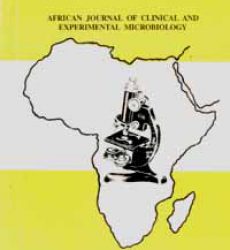Abstract
Nosocomial infection is a recognized public health problem world-wide with a prevalence rate of 3.0-20.7% and an incidence rate of 5-10%. It has become increasingly obvious that infections acquired in the hospital lead to increased morbidity and mortality which has added noticeably to economic burden. However, after about three decades of nosocomial infection surveillance and control world-wide, it still remains an important problem for hospitals today. Studies have shown that most hospitals in developing countries especially Africa, have no effective infection control programme due to lack of awareness of the problem, lack of personnel, poor water supply, erratic electricity supply, ineffective antibiotic policies with emergence of multiply antibiotic resistant microbes, poor laboratory backup, poor funding and non-adherence to safe practices by health workers. It is recommended that the cost of hospital infection control programme should be included in the health budget of the country and fund allocated for the infection control committee for routine control purposes and to bear the cost of outbreaks. There is need for adequate staffing and continuous education of staff on the principles of infection control, especially hand washing which is the single most important effective measure to reduce the risks of cross infection.
Download full journal in PDF below
Nosocomial infections and the challenges of control in developing countries

